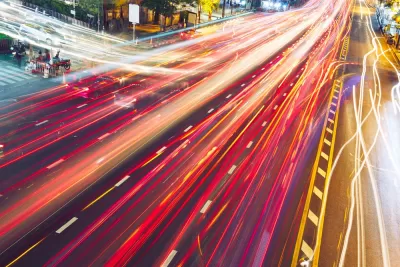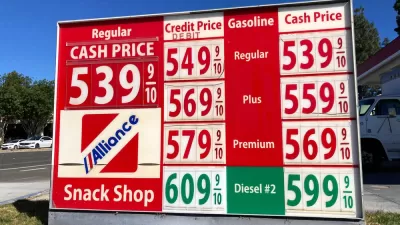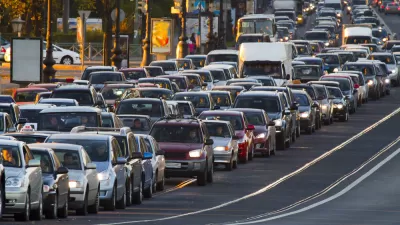Americans preference to travel in their own personal vehicles shows no signs of abating, reflected by May mileage data, the most recent compiled by the Federal Highway Administration, indicating a 2.2 percent increase compared with May 2016.

While *month-to-month fluctuations may not be statistically significant, it is nonetheless worth noting that the June 27 post on Federal Highway Administration (FHWA) data showed that April's monthly mileage was up 1.2 percent in comparison to April 2016, and that the first four months of 2017 saw a 1.5 percent increase compared with 2016. Mileage from January through May of this year was up 1.7 percent compared with the first five months of last year.
FHWA's Traffic Volume Trends for May 2017 showed similar regional differences with April's map: The West saw the highest increase of 3.2 percent, while the Northeast and Midwest increased the lowest, each by 1.5 percent, though all were up substantially over the April increase.
Vehicle miles traveled (VMT) has been on the rise since 2013, and accelerated after gas prices began falling in July 2014, with 2015 breaking the so-called "peak car" record set in 2007. [See Planetizen blog post, "So Much for Peak VMT," by Steve Polzin, March 8, 2016]. But that record didn't last long.
"Last year saw a cumulative travel increase of 2.8 percent to 3.218 trillion miles, setting a new record as cheap gas contributed to increased driving," notes our February 2017 post on FHWA's 2016 report.
On Friday, the American Association of State Highway and Transportation Officials (AASHTO) also reported on the May mileage data, noting that the record miles-driven have put more wear and tear on the nation's roads and bridges.
"The growing traffic volumes are no surprise to our members, the state departments of transportation, which are trying to maintain a stressed transportation system, to ease congestion and improve safety – despite constrained resources," said Executive Director Bud Wright.
The nonprofit association representing 50 state transportation departments wrote [pdf] the U.S. Senate last month asking that they hike transportation user fees, including the 18.4-cent per gallon federal gas tax, unchanged since 1993, in order to make the Highway Trust Fund sustainable beyond 2020, the expiration of the FAST Act.
American Road & Transportation Builders Association President Pete Ruane also wrote [pdf] the Senate Finance Committee on the same topic, suggesting that a "highway-based freight fee" also be levied. In a December 2016 report, the U.S. Congressional Budget Office suggested that an "excise tax on overland freight transport" be considered.
This option would impose a new tax on freight transport by truck and rail. The tax would be 30 cents per mile on freight transport by heavy-duty trucks (Class 7 and Class 8 vehicles in the Federal Highway Administration’s vehicle-weight classification)
Three states currently charge a mileage fee applicable only to heavy trucks, according to a June post about the option being considered by the Wisconsin legislature.
*Footnote: FHWA Traffic Volume Trends reports also include seasonally-adjusted data, "which is conducted by USDOT’s Bureau of Transportation Statisticsas a way to even out seasonal variation in travel and enable vehicle miles travelled (VMT) comparisons with any other month in any year." For example, May's report notes:
The seasonally adjusted vehicle miles traveled for May 2017 is 267.2 billion miles, a 1.6% (4.3 billion vehicle miles) increase over May 2016. It also represents a -0.4% decline (-1.0 billion vehicle miles) compared with April 2017.
FULL STORY: Another Month, Another Mileage Record Set

Planetizen Federal Action Tracker
A weekly monitor of how Trump’s orders and actions are impacting planners and planning in America.

Congressman Proposes Bill to Rename DC Metro “Trump Train”
The Make Autorail Great Again Act would withhold federal funding to the system until the Washington Metropolitan Area Transit Authority (WMATA), rebrands as the Washington Metropolitan Authority for Greater Access (WMAGA).

The Simple Legislative Tool Transforming Vacant Downtowns
In California, Michigan and Georgia, an easy win is bringing dollars — and delight — back to city centers.

The States Losing Rural Delivery Rooms at an Alarming Pace
In some states, as few as 9% of rural hospitals still deliver babies. As a result, rising pre-term births, no adequate pre-term care and "harrowing" close calls are a growing reality.

The Small South Asian Republic Going all in on EVs
Thanks to one simple policy change less than five years ago, 65% of new cars in this Himalayan country are now electric.

DC Backpedals on Bike Lane Protection, Swaps Barriers for Paint
Citing aesthetic concerns, the city is removing the concrete barriers and flexposts that once separated Arizona Avenue cyclists from motor vehicles.
Urban Design for Planners 1: Software Tools
This six-course series explores essential urban design concepts using open source software and equips planners with the tools they need to participate fully in the urban design process.
Planning for Universal Design
Learn the tools for implementing Universal Design in planning regulations.
Smith Gee Studio
City of Charlotte
City of Camden Redevelopment Agency
City of Astoria
Transportation Research & Education Center (TREC) at Portland State University
US High Speed Rail Association
City of Camden Redevelopment Agency
Municipality of Princeton (NJ)





























